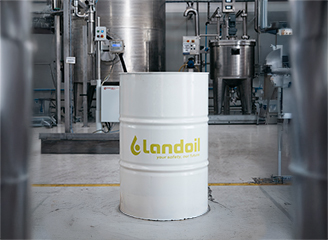Workplace safety is a fundamental priority for companies, but there are still significant gaps to be filled, especially when it comes to managing chemical substances such as metalworking fluids. For this reason, we decided to conduct a study, in collaboration with Brain on Strategy, to explore workers’ levels of awareness and perceptions of chemical risks and the safety measures implemented in their companies.
Below, we analyze the survey results and delve deeper into the strategic role of metalworking fluids, which are essential in industrial processes but are often inadequately managed.
Workers’ Awareness of Risks Related to Metalworking Fluids
The survey involved over 1,000 workers, including both operational staff and management, to evaluate their level of awareness about chemical risks. The data revealed that only 24.6% of workers consider themselves “very informed”, while 48.6% claim to be “somewhat informed”. This highlights the need for more comprehensive training, especially concerning substances like metalworking fluids, whose improper handling can lead to significant health issues, including skin irritation and respiratory diseases.
Additionally, the survey revealed that:
- Only 10.3% of workers have a full understanding of the specific risks associated with metalworking fluids
- 22% of companies conduct regular checks on emulsions, a figure that rises to 30% in the metalworking sector but remains insufficient
- Workers in the manufacturing sector perceive a higher frequency of checks, with 45% considering the inspections consistent
The Role of the Chemical and Metalworking Sectors in Metalworking Fluid Safety
Not all industrial sectors perform equally in terms of awareness and management of risks associated with metalworking fluids. The survey highlighted differentiated performances:
- The chemical sector ranks among the most virtuous, with awareness levels 18% above the national average
- The metalworking sector follows with a +15%, showing significant attention to chemical substance management and emulsion checks
These sectors demonstrate that a structured and continuous approach can make a significant difference in risk prevention and worker safety.
Corporate Investments in Safety: Expectations vs Reality
One of the critical issues highlighted is the gap between workers’ perceptions and companies’ actual investments in workplace safety. Only 20.3% of workers rate the investments as “very adequate”, while 36.5% consider them “somewhat sufficient.”
An even more concerning statistic is that only 21.5% of workers receive regular updates on safety protocols. For metalworking fluids, this means that many companies are not ensuring proper emulsion management and adequate technical training to prevent accidents.
Training and Technical Support on Metalworking Fluids: The Path Ahead
Although 40.8% of workers recognise regular technical support from suppliers, there is a clear need for a more structured approach. Specifically:
- In the chemical sector, 40% of workers receive occasional training, a figure 10% below the national average
- However, safety protocol updates in this sector are more frequent, with an +8% above the national average
These results call for immediate action to close the gaps and ensure safe management of metalworking fluids, preventing risks such as emulsion deterioration and bacterial proliferation.
Conclusions and Future Perspectives
The survey underscores the urgency of creating a culture of prevention and workplace safety. Metalworking fluids and industrial lubricants, while essential in production processes, require more attentive and informed management.
A structured approach, based on:
- Continuous training programmes
- Rigorous monitoring systems
- Specialised consultancy
can reduce risks to workers’ health and improve the efficiency of industrial processes. Only by addressing the current shortcomings can we ensure excellent safety standards across all productive sectors.








